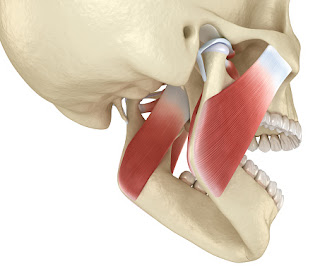TMJ Cause, Effects And Treatments
The temporomandibular (tem-puh-roe-man-DIB-u-lur) joint (TMJ) acts like a sliding hinge, connecting your jawbone to your skull. You have one joint on each side of your jaw. TMJ disorders — a type of temporomandibular disorder or TMD — can cause pain in your jaw joint and in the muscles that control jaw movement.
TMJ disorders have many signs and symptoms. It's often hard to know for sure if you have TMJ, because one or all of these symptoms can also be present for other problems. Your dentist can help make a proper diagnosis by taking a complete medical and dental history, conducting a clinical examination and taking appropriate X-rays.
Some of the most common TMJ symptoms include:
Headaches (often mimicking migraines), earaches, and pain and pressure behind the eyes
A clicking or popping sound when you open or close your mouth
Pain brought on by yawning, opening the mouth widely or chewing
Jaws that "get stuck," lock or go out
Tenderness of the jaw muscles
A sudden change in the way the upper and lower teeth fit together
Cause and Effect
In most cases, causes of TMJ disorder are combination of factors like jaw injuries and joint disease, such as arthritis. It is believed that bruxism (tooth clenching or grinding) and head or neck muscle tension may make TMD symptoms worse. Stress is also a possible factor. However, it is not clear if stress causes TMDs or is a result of them.
Other things that may lead to TMDs are partial or full dentures that are not the right fit and certain habits such as fingernail biting and pen or pencil biting.
Treating TMDs
Most patients with TMDs get better by themselves without any treatment. To help ease sore jaw muscles, place a cold or warm compress to your jaw and gently massage your jaw muscles. Eat a soft diet, cut food into small pieces and avoid hard, chewy or sticky foods. Try not to open your mouth too wide, even when you yawn. And most importantly, relax your jaw muscles.
When you are relaxed, your teeth should be slightly apart and your tongue should rest on the floor of your mouth with your lips barely touching or slightly apart. There should be a slight space between your upper and lower teeth except during chewing, speaking or swallowing.
How can I stop the pain from coming back?
When your pain is better, you can do these exercises to make your muscles stronger and to keep the pain from coming back:
Resisted mouth opening: Place your thumb or two fingers under your chin and open your mouth slowly, pushing up lightly on your chin with your thumb. Hold for three to six seconds. Close your mouth slowly.
Resisted mouth closing: Place your thumbs under your chin and your two index fingers on the ridge between your mouth and the bottom of your chin. Push down lightly on your chin as you close your mouth.
Tongue up: Slowly open and close your mouth while keeping the tongue touching the roof of the mouth.
Side-to-side jaw movement: Place an object about one fourth of an inch thick (for example, two tongue depressors) between your front teeth. Slowly move your jaw from side to side. Increase the thickness of the object as the exercise becomes easier.
Forward jaw movement: Place an object about one fourth of an inch thick between your front teeth and move the bottom jaw forward so that the bottom teeth are in front of the top teeth. Increase the thickness of the object as the exercise becomes easier.
These exercises should not be painful. If it hurts to do these exercises, stop doing them and talk to your family doctor.
When to see a doctor
Seek medical attention if you have persistent pain or tenderness in your jaw, or if you can't open or close your jaw completely. Your doctor, your dentist or a TMJ specialist can discuss possible causes and treatments for your problem.




Comments
Post a Comment